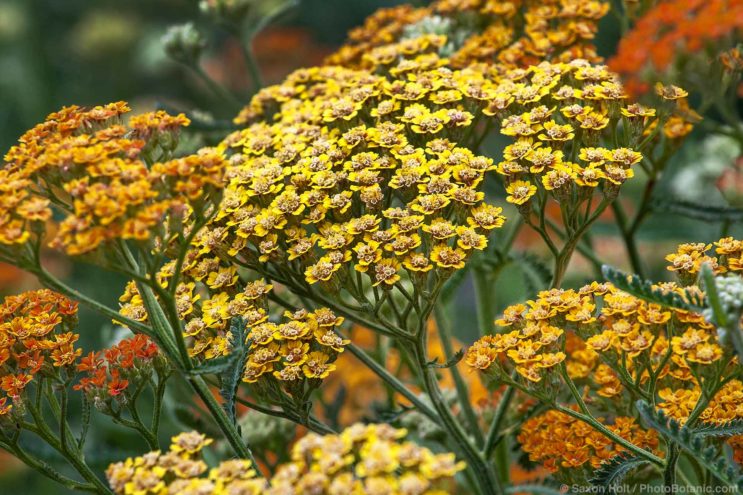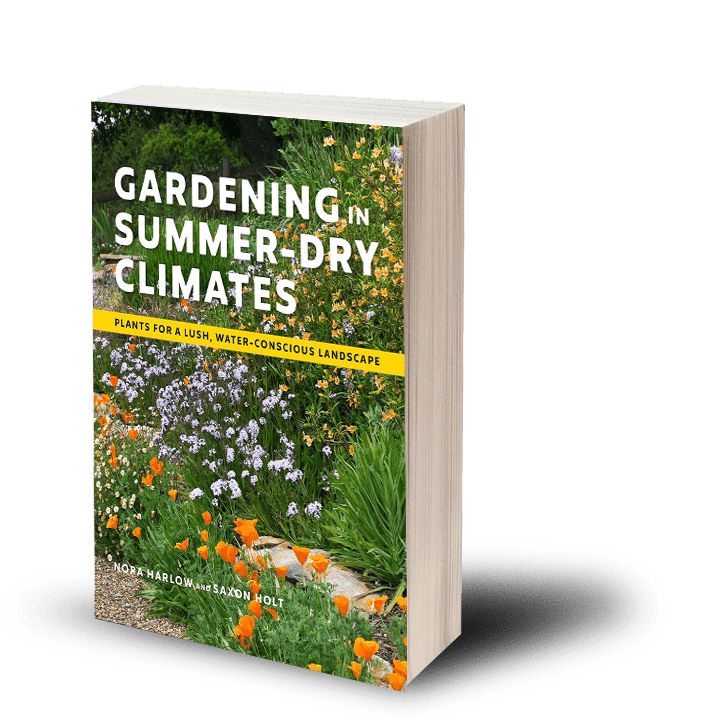What is a Drought-Tolerant Plant?

Share This!
Many plants are advertised or described as drought-tolerant, but what, if anything, does that tell us? Drought-tolerant where? Drought-tolerant when? Drought-tolerant if . . . what?
By now, with unusually dry weather increasingly common worldwide, most gardeners likely are aware that drought itself may be defined in different ways, depending on one’s perspective.

At the risk of oversimplifying, meteorological drought is lower than normal precipitation. Hydrological drought is lower than normal streamflow or groundwater levels. Agricultural drought is inadequate soil moisture for specific crops. Socioeconomic drought is insufficient water supply to meet demand. Ecological drought is insufficient moisture to maintain healthy ecosystems.
None of these definitions tells us exactly what a so-called drought-tolerant plant can survive.

Perovskia atriplicifolia ‘Filigran’ (Russian sage)
Physiological drought, also known as hydric deficit or water stress, is the point at which a given plant begins to suffer as transpiration exceeds the moisture available for uptake by roots. Gardeners are wholly familiar with its effects.
Much science is devoted to the study and enhancement of protective responses of food crops to physiological drought. To the rest of us it might seem that, by definition, no plant is “tolerant” of drought because physiological drought is the onset of a decline that, if not addressed by the gardener or by the plant, ultimately ends in death.

Ceanothus ‘Concha’ (California lilac)
What most non-scientists seem to mean when they use the phrase “drought-tolerant plant” is simply a plant that thrives in dry times with less supplemental water than other plants. Dry times can mean drier than normal (an officially declared drought) or it can mean a season that is normally dry, such as three to six typically rainless summer months. Normal precipitation, of course, varies from one place and one climate to another. The norm in Seattle is not the same as the norm in Los Angeles.
The problem with labeling a plant as drought-tolerant is not only that the term reveals little about the plant. It also sets up unrealistic expectations for the gardener. There are many factors that affect a plant’s ability to protect itself from drought other than the plant’s genetics. For example, a plant with low needs for water and a preference for afternoon shade likely will need more supplemental water if placed in hot sun.
Plants with low needs for water in moisture-retentive soils may fail in fast-draining, rocky or sandy soils if supplemental water is not provided. A windy location may increase needs for water for an otherwise “drought-tolerant” plant. Even an especially wet winter and the waterlogged soils that result may so damage roots that a normally low-water plant is not low-water at all. Unusually low winter temperatures can have the same effect.

Arctostaphylos refugioensis (Refugio manzanita)
Other terms commonly used to describe “drought-tolerant” plants are not much better at depicting the phenomenon. “Drought-resistant” only shifts the focus to characteristics of the plant that enable it to avoid, escape, or recover from water stress, not tolerate it. “Xeric” means arid and refers to habitats, not plants. “Water-conserving” would seem to refer to plants that store water (succulents) or to gardens that reduce water consumption by the use of low-water plants. And surely people and gardening practices, not plants, are “waterwise.”

Achillea millefolium ‘Terracotta’ (yarrow)
A term increasingly used to describe plants that need little or no supplemental water is “climate-adapted.” Many climate-adapted plants are native to the locale in which they are planted. Many others are naturally found in similar climates far away.
Climate-adapted takes into account the nuances of dryness to which a plant may be exposed. A desert plant native to an arid or semiarid climate with summertime monsoons may need some supplemental summer water in a garden outside its natural range. A plant native to the foggy coast likely will need some summer irrigation inland even if annual rainfall totals are the same. And summer-dormant plants may need supplemental water to flower and set seed if winter or spring rains fail.

Eriogonum grande var. rubescens (San Miguel Island buckwheat)
“Climate-adapted” clearly wouldn’t suffice on nursery labels for plants that are marketed throughout the country or the world, but it best describes the characteristics of a plant that will thrive in your garden. If you know something about the climate in which a plant is naturally found you are that much closer to success in growing it.
Share This!
Related Articles
By: Saxon Holt
By: Nora Harlow
By: Nora Harlow





